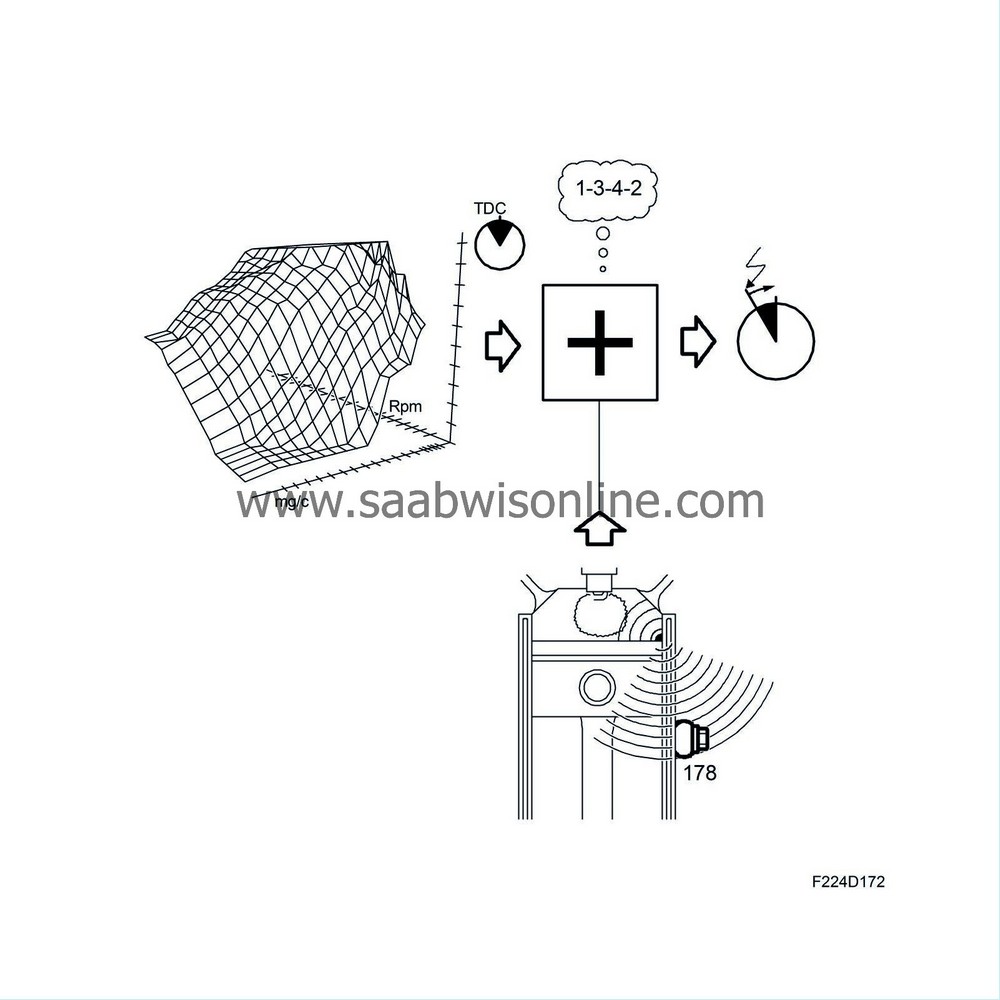PRE-RELEASE
Knock control
| Knock control |
| Knocking, general |
Combustion in an Otto engine can be beneficial (normal combustion) or destructive (knocking).

Normal combustion takes place in a controlled fashion at a speed in the range 20-40 m/s, depending on the prevailing operating conditions.
The pressure in the cylinder now rises in a controlled manner while combustion proceeds. Maximum pressure is reached at about 16-17 degrees ATDC. Occasionally, the pressure and temperature in the cylinder will become so high that the unburned air/fuel mixture self ignites, which can happen either before or after the spark has been generated. This self-ignition usually takes place very rapidly and consequently releases large amounts of energy into the cylinder in a very short time.
Knocking can give rise to shockwaves that can travel at supersonic speeds. Uncontrolled knocking can damage the engine, e.g. through melting the pistons and cylinder head and through fatigue caused by the effect of shockwaves on the pistons and bearings. One must differentiate between controlled knocking that is handled by the engine management system and uncontrolled knocking that can occur if the engine is run on inferior quality fuel at high air temperatures and high altitudes, etc.
A high compression ratio is advantageous to engine efficiency and consequently fuel consumption.
The tendency an engine has to knock, however, increases with compression ratio so the compression ratio for a specific engine is chosen with regard to the engine's tendency to knock and the fuel's tendency to knock.
Knock control in modern engines is not a safety function but a standard function. Consequently, it is normal for knock control to be active during normal driving. At times in certain operating conditions, the engine can be heard knocking. This is controlled knocking that can be considered normal.
| Knock control |
By analysing the knock signal, the ECM will be able to identify the knocking cylinder and in that case how much.

If the level of knocking exceeds a certain value, ECM will retard the ignition for the relevant cylinder until the knocking ceases.
Subsequently, the timing correction will slowly return to zero, i.e. the original setting. Fuel enrichment is also used to control knocking.
If this still does not help any more, the engine torque will be limited.


